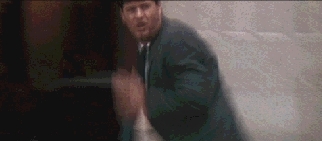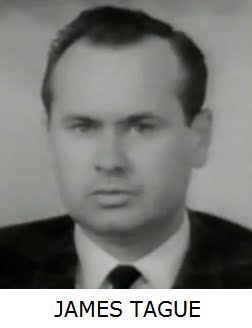The JFK 100
Eyewitness James Tague

Michael Skipper as James Tague

Michael Skipper as James Tague
The Warren Commission thought they had an open and shut case: three bullets, one assassin -- but two things happened that made it virtually impossible: 1) the Zapruder film, which you just saw, and 2) the third wounded man, Jim Tague, who was nicked by a fragment down by the Triple Underpass. The time frame of 5.6 seconds established by the Zapruder film left no possibility of a fourth shot from Oswald's rifle, but the shot or fragment that left a superficial wound on Tague's cheek had to come from a bullet that missed the car entirely. Now they had two bullets that hit, and we know one of them was the fatal head shot. So a single bullet remained to account for all seven wounds in Kennedy and Connally. But rather than admit to a conspiracy or investigate further, the Commission chose to endorse the theory put forth by an ambitious junior counselor, Arlen Specter. One of the grossest lies ever forced on the American people, we've come to know it as the "magic bullet" theory.(1)Strong words, to be sure. Is Oliver Stone accurately representing the facts? Let's examine his claims.

The time frame of 5.6 seconds established by the Zapruder film left no possibility of a fourth shot from Oswald's rifle . . .While there is no hard evidence of a fourth shot in Dealey Plaza, Stone is incorrect about the timing issue. In no way, shape, or form does the Zapruder film establish a "time frame of 5.6 seconds" for the assassination, nor did the Warren Commissin ever state that it did.
. . . but the shot or fragment that left a superficial wound on Tague's cheek had to come from a bullet that missed the car entirely.False. There is no reason whatsoever that Tague's minor wound could not have been the result of a bullet fragment from the shot that fatally struck the President's head. Evidence suggests this was the case.(2)
Now they had two bullets that hit, and we know one of them was the fatal head shot. So a single bullet remained to account for all seven wounds in Kennedy and Connally.Again, this is false. Since there is no reason to assume that the Tague strike resulted from a shot that missed the limousine, it is not necessary for a single bullet to have inflicted all of the non-fatal wounds upon President Kennedy and Governor Connally.
The Warren Report states:
Although it is not necessary to any essential findings of the Commission to determine just which shot hit Governor Connally, there is very persuasive evidence from the experts to indicate that the same bullet which pierced the President's throat also caused Governor Connally's wounds.(3)The case for the Single Bullet Theory has only grown stronger over the years; but it is not now and has never been a necessary element of a lone assassin scenario.
You may wish to see . . .
The JFK 100: The Single Bullet Theory
NOTES:1. Oliver Stone and Zachary Sklar, JFK: The Book of the Film (New York: Applause, 1992), p. 152. All quotations are from the shooting script and may vary slightly from the finished motion picture.
2. In addition to the article of Ken Rahn's cited above, there is a good discussion of this subject in Josiah Thompson, Six Seconds in Dallas (New York: Bernard Geis Associates, 1967), pp. 230-33.
3. Warren Commission Report, p. 19.
The JFK 100: The Single Bullet Theory